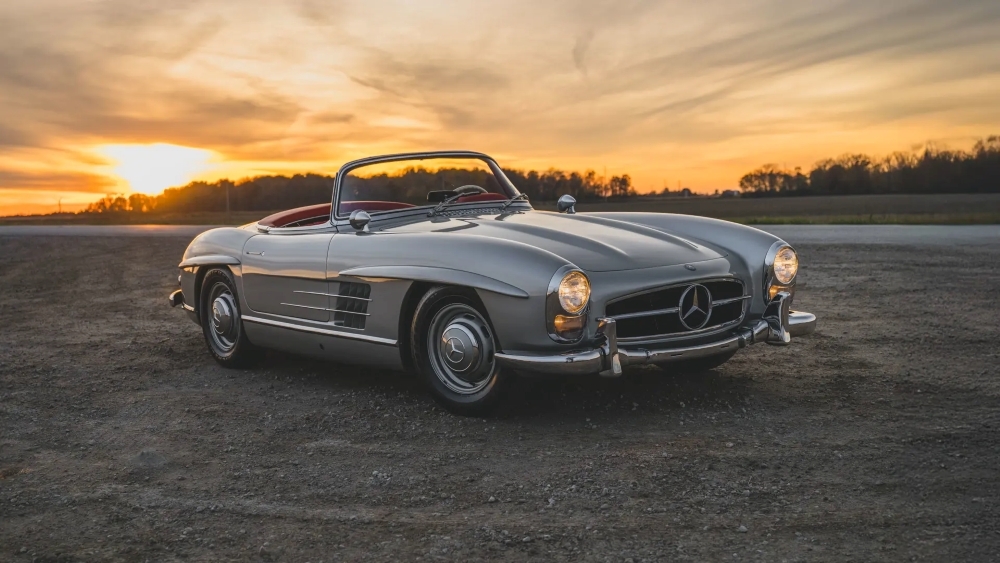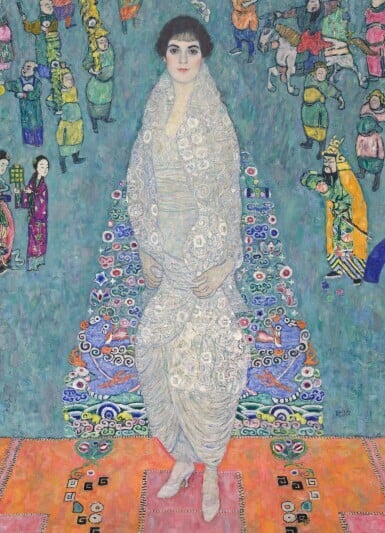Modern Voices, Timeless Visions: Sotheby’s Leading the Rise of Middle Eastern Art
Art from the Middle East is enjoying unprecedented growth in the past decade. Proof of this is evident in Sotheby’s several sales and exhibitions dedicated to Arab artists, spanning decades and a variety of mediums. As the largest auctioneer of specialist sales of Modern and Contemporary Middle Eastern art, the auction house is backed by outstanding results in this category and solid market intelligence in the field. Since introducing the sales to the London auction calendar in 2016, Sotheby’s has broken sales records and set new industry standards.
Sotheby’s consolidated its position as the leading platform for Modern and Contemporary Middle Eastern art, increasing its market share year after year. London is now firmly positioned as the principal hub for the sale of artworks from the MENA region, with past sales consistently achieving prices at or above their pre-sale estimate. This enduring appetite among collectors reflects a deeper, more discerning appreciation for the creative voices from the Middle East and North Africa. An unequivocal proof was the landmark sale in April 2013, when Sotheby’s Contemporary Art auction in Doha achieved a remarkable $15.2 million in total sales, setting a record that remains, to this day, the highest ever result at an auction for Contemporary Art in the region.

Sotheby’s Modern & Contemporary Middle East Auction
This spring, Sotheby's London will reveal several museum-quality pieces that confirm the calibre of works found in the MENA regional markets. Sotheby’s Modern & Contemporary Middle East auction coming to London in April is a bi-annual event that celebrates the breadth and depth of artistic expression from the Arab world, North Africa, and Türkiye, with a vast representation of themes and subjects. Prior to the auction, a curated selection of the region’s most culturally significant works will take centre stage at exhibitions in Dubai and London. With a focus on important modernist and contemporary avant-garde artists, highlights on display include pieces by Burhan Dogançay and Juliana Séraphim. The world-class nature of these remarkable works makes them increasingly sought after by mainstream collectors and illustrates how they have now come to be associated with the best of Arab art. Buyers continue to show appreciation for the calibre of the works represented and the global resonance of the artists, recognised by institutions, curators, and collectors alike.
Burhan Dogançay
Untitled – Ribbons Series, 1975
(acrylic on canvas)
Born in Istanbul in 1929, Burhan Do?ançay began his artistic training under the guidance of his father, painter Adil Do?ançay. His formative years and experimental practice soon revealed an artist of remarkable range whose vision would span collage, abstraction, photojournalism, painting, sculpture, and photography. Yet, it is his singular engagement with the language of urban walls and doors that has earned Do?ançay a distinctive place within the canon of contemporary art.
Do?ançay's celebrated Ribbons series, which came to light in the early 1970s, marked a striking evolution in his oeuvre. Departing from the textured, collage-based realism of his earlier depictions of weathered urban surfaces, these works unveil a more refined and abstract sensibility. The Ribbons paintings retain a deep connection to the street environment and resemble aspects of cursive Islamic calligraphy. Do?ançay himself acknowledged this resemblance in the titles of select pieces, while others remained deliberately untitled, inviting open interpretation.
Over the course of his prolific career, he produced 14 distinct series, each examining the visual and symbolic fabric of urban walls through varying techniques and materials. From the 1960s onwards, collage became his preferred medium – the artist remained fully committed to capturing the fragmented narratives found within the built environment.
Do?ançay’s works have been exhibited all around the world and now reside in the permanent collections of the most esteemed cultural institutions, including The Metropolitan Museum of Art and the Guggenheim in New York, the British Museum in London, Centre Georges Pompidou in Paris, and the Albertina in Vienna.
Juliana Séraphim
Untitled – Signed and dated Juliana Séraphim, '91
(oil on canvas)
Juliana Séraphim was born in Jaffa, Palestine, in 1934. Following her family’s forced displacement to Lebanon, she embarked on an artistic journey that would span continents and disciplines. During the 1950s, she began her formal training under the guidance of Jean Khalifé, a pioneering figure in Lebanese abstraction. Her pursuit of artistic expression soon led her to Europe, where she studied at the Academy of Fine Arts in Florence and the Royal Academy of San Fernando in Madrid. It was here where Séraphim’s unique visual language began to manifest, marked by an ethereal, dreamlike quality that would become the hallmark of her practice.
Rooted in Surrealism, Séraphim’s works transcend the tangible world, offering instead intimate visions anchored in the deepest recesses of her subconscious. Her layered compositions reveal a utopian realm where femininity, introspection, and emotional sensitivity are not only celebrated but revered. In contrast to many of her contemporaries whose work engaged with the overtly political, Séraphim chose instead to explore the inner worlds and the complexities of the self. Her canvases, woven with free-flowing lines, translucent hues, and cryptic symbols, invite quiet contemplation. The interplay of complementary tones, such as verdant greens and saturated pinks, evokes a serene, almost melancholic atmosphere. “The images in my paintings come from deep within me: they are surreal and unexplainable,” she once observed.
Séraphim’s work enjoys global recognition, with institutions such as the Metropolitan Museum of Art in New York and the Institut du Monde Arabe in Paris proudly holding her pieces in their permanent collections. Her legacy remains a luminous voice in modern Arab art – a visionary who painted not the world she saw but the world she dreamed.
Final Note
Sotheby’s continues to support artistic talent with genuine dedication, championing not only emerging artists but also the curators and institutions that bring critical depth and context to their work. It’s a commitment that goes beyond sales, helping to sustain the wider cultural landscape.
This April, the Modern and Contemporary Middle East exhibition will make its way to Dubai from the 7th to the 11th before arriving in London on the 25th. It offers a rare chance to experience stories that are as personal as they are powerful – each artwork telling its own tale with striking beauty and emotional weight. As we look to the upcoming exhibition, it’s clear that the story of Middle Eastern art is still unfolding – rich with history, full of energy, and more relevant than ever.



